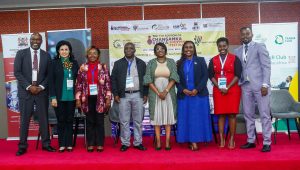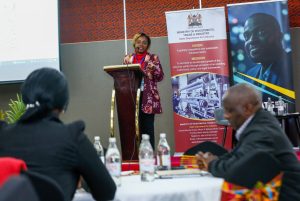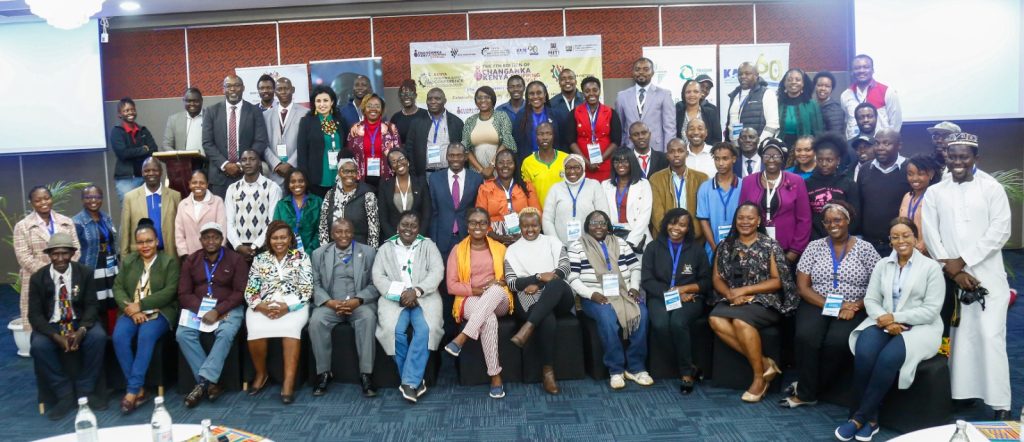As the Kenya Industrialization Conference convenes at the Kenyatta International Convention Centre (KICC), the three-day event, supported by the Kenya Association of Manufacturers (KAM) and the Ministry of Investments, Trade, and Industry, serves as a crucial platform for advancing the agenda of AI and green industrialization. This year’s theme, “Leveraging Artificial Intelligence (AI) and Green Industrialization to Accelerate Africa’s Structural Transformation,” signals a strategic shift that is both timely and essential. In today’s fast-evolving global economy, Kenya’s ambition to become a competitive manufacturing hub is commendable. However, this vision can only be realized if the nation commits to integrating cutting-edge technologies and sustainable practices.
The Potential of AI in Manufacturing
AI’s potential to transform production lines, optimize supply chains, and enhance product quality through machine learning holds the promise of unprecedented efficiency for Kenya’s industrial sector. However, for AI to make a substantial impact, policymakers and industry leaders must address several barriers, including high implementation costs and the need for workforce upskilling. While AI usage in manufacturing remains limited compared to service sectors, initiatives from the private sector, such as partnerships focused on AI education and skill development, are essential to fully harness AI’s potential in manufacturing.
The Urgency of Green Industrialization

With climate change posing a significant threat, Kenya must confront the environmental impact of traditional manufacturing practices. Encouragingly, initiatives like the adoption of solar-powered manufacturing plants by local companies signal that the shift toward sustainability is already underway. Kenya’s abundant solar and wind energy resources position it well to lead in renewable-powered industrial processes. This shift is not only an environmental imperative but also a strategic move to attract eco-conscious global investors. According to a 2023 UNEP report, green technology investments in Africa could increase by $2 billion annually by 2030 if nations implement sustainable policies.
The Role of Changamka Festival and Public Engagement
Running alongside the conference, the Changamka Festival served as a vibrant showcase of Kenya’s innovation and entrepreneurial spirit. Companies like Roam Electric, a leader in locally designed and manufactured electric vehicles, including motorcycles and mass transit buses, highlighted products that aligned with the conference’s theme. Dr. Mattress also displayed furniture with reduced material usage, contributing to a lower carbon footprint. Public engagement through such events is crucial, as citizen awareness and support for AI and sustainable practices drive widespread adoption and impact.
Addressing Workforce Concerns and Societal Impact
While AI and automation offer increased efficiency, they also raise legitimate concerns about potential job displacement. Strategies must be implemented to retrain workers and develop skill sets aligned with an AI-driven manufacturing landscape. Digital training programs targeting youth can be expanded to include AI-specific skills for manufacturing. Additionally, environmental advocacy groups stress that green industrialization must prioritize community well-being. Implementing stringent environmental standards will not only foster sustainability but also protect vulnerable communities from potential industrial pollution.
Bridging the Financial Gap

Access to financing is a critical factor for the successful adoption of AI and green industrialization in Kenya. Despite advancements in technology, many local manufacturers and startups struggle to secure the capital necessary to integrate AI systems across various value chains. Aligning public and private sector initiatives to offer favorable loan terms, grants, and investment incentives for green projects and tech innovations is essential. Programs like those run by Stanbic Bank and Afreximbank, which focus on green financing, and partnerships with venture capital firms prioritizing eco-friendly technology can bridge this funding gap. Strengthening financial accessibility ensures that the momentum from conferences like this one translates into practical progress that benefits the entire industrial ecosystem.
Conclusion: Seizing the Moment for a Greener, Smarter Kenya
The push for a sustainable and AI-driven manufacturing sector is about more than positioning Kenya as a leader in Africa; it is about building a future where prosperity is rooted in innovation and sustainability. If the ideas shared at KICC this week translate into actionable policies, Kenya will set a powerful precedent for other African nations. This is not merely an opportunity for growth; it is a commitment to future generations.
Kenya stands at a pivotal moment, with the tools for transformation within reach. It is now up to the government, industry leaders, and the Kenyan people to ensure that this moment does not fade as just another conference headline. The true measure of success will be seen in factories humming with advanced technology, powered by clean energy, and operated by a skilled, empowered workforce.







More Stories
Ahmed Farah’s Tenure as KNCCI CEO Concludes
Q&A: Cledun Realtors MD Duncan Muiruri on Land Investment and Winning Big
Brazy Named Spotify’s EQUAL Africa Artist for April